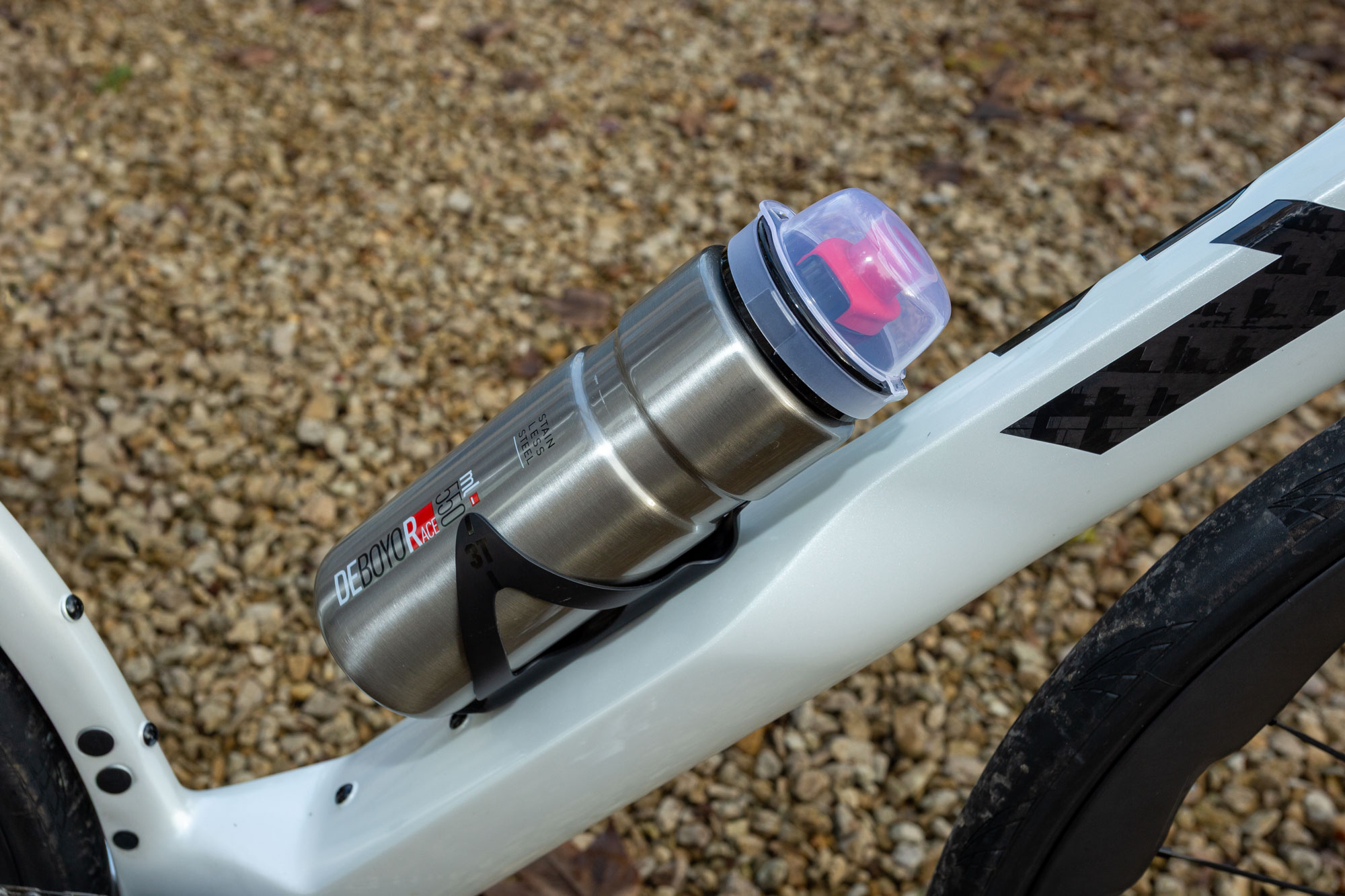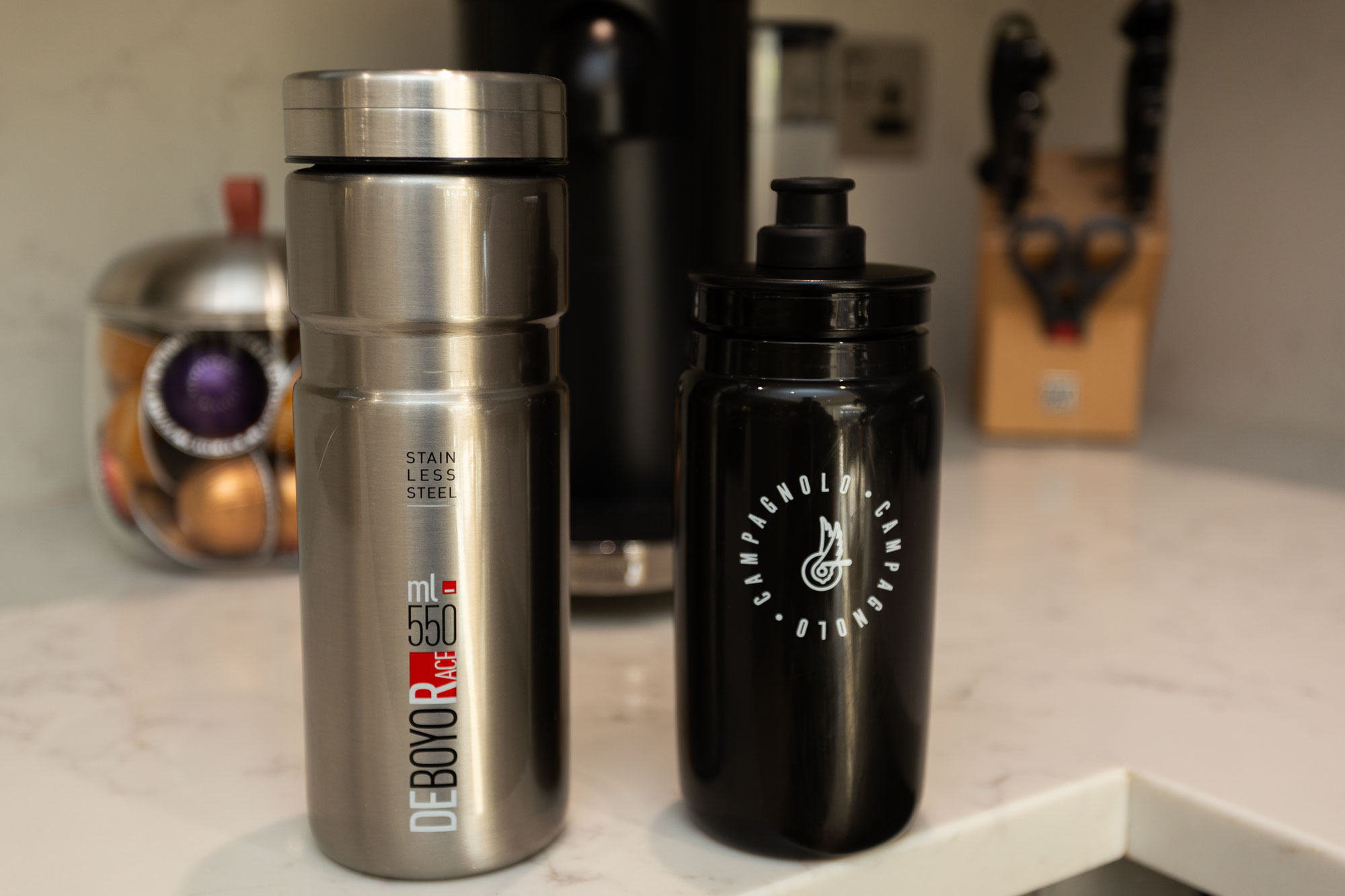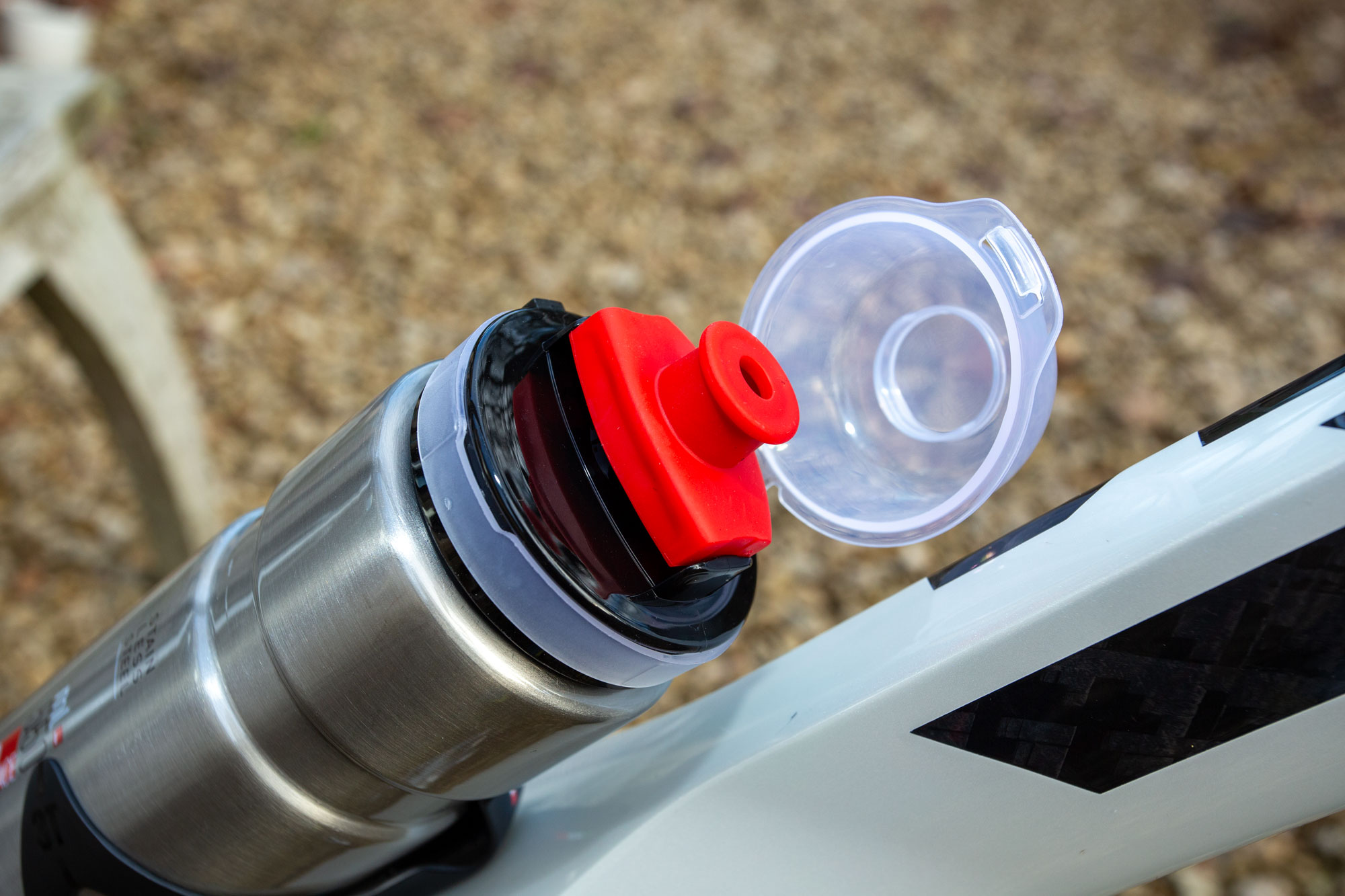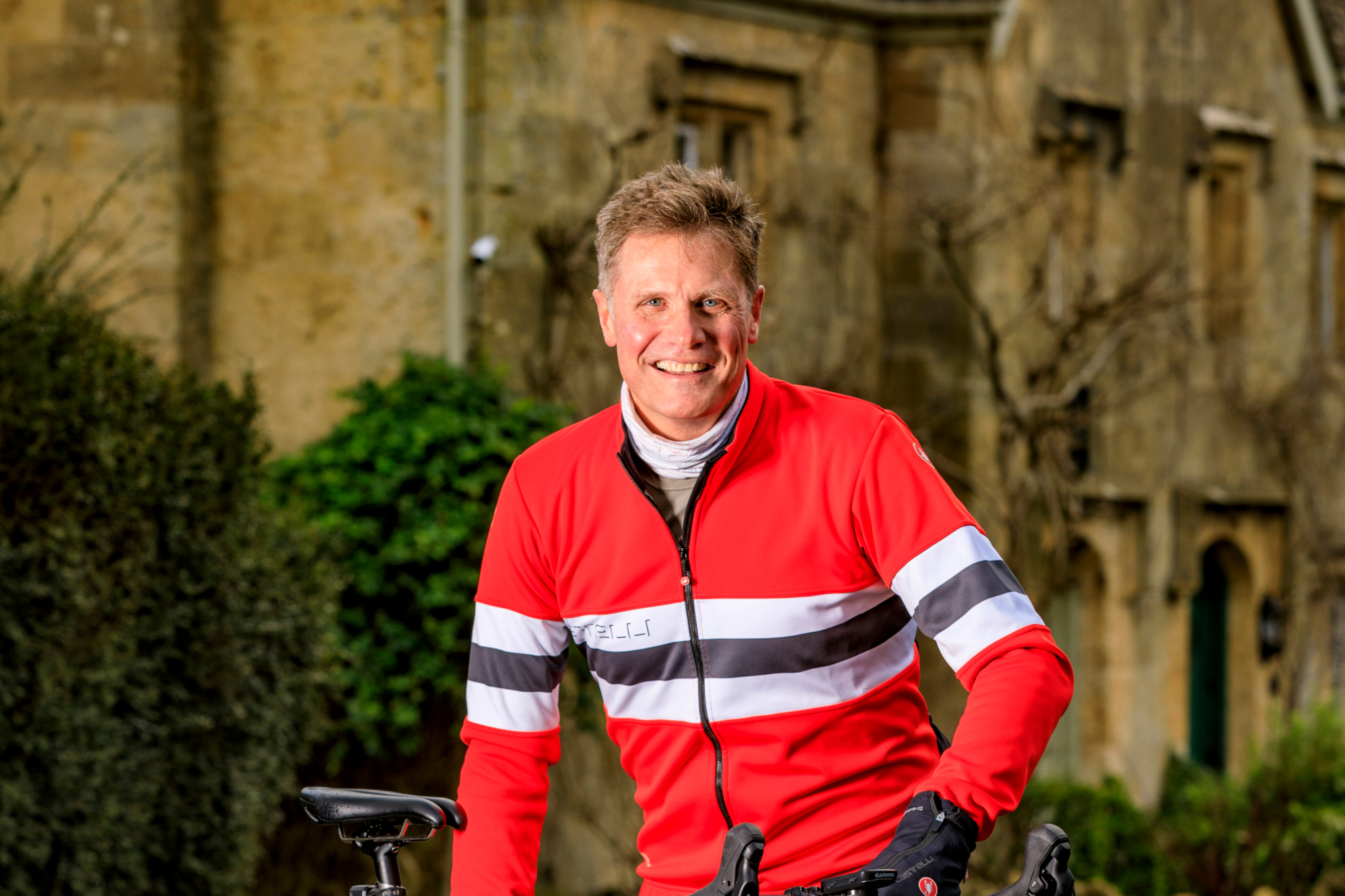Elite Deboyo Race stainless-steel thermal bidon review: cool when it’s hot and hot when it’s not
When your favourite café shuts for winter, this insulated bidon is an ingenious way to bring the barista to any countryside bench. A cool choice in the summer, too.

This Elite Deboyo Race is a stylish, vacuum-insulated stainless-steel cycling bottle that won’t break the bank. Its dual caps offer fantastic versatility, and it successfully keeps hot drinks hot and cold drinks cold for longer than the duration of most ‘real-world’ rides. A worthwhile accessory that brings warmth within the cold grasp of winter rides.
-
+
Inexpensive. Priced slightly below the competition
-
+
Great quality product from a trusted brand
-
+
Thermal properties are excellent
-
+
Extremely versatile
-
+
74mm diameter fits standard cycling bottle cages
-
+
No odour, no aftertaste
-
-
Marks easily
-
-
May rattle slightly in non-Elite cages
-
-
Heavier than plastic, but so what?
You can trust Cycling Weekly.

I love a good coffee stop. Here in the Cotswolds, I’m blessed with some of the finest cafés known to humanity, but now that winter has cast its gloomy shadow over these picture-postcard limestone hills, many close early or shut up shop altogether until spring.
Ever resourceful, I’ve resorted to what promises to be the next best thing, a flaskful of Java, or, more accurately, an Elite Deboyo Race stainless-steel thermal bidon filled from my humble Nespresso machine.
I bought the Deboyo Race primarily for winter rides, but I’m hoping it’ll help me weather the hottest rides of next summer, too. Provided that we have a summer, which is never a certainty in this part of the UK. Whichever way the cookie crumbles, I'll put the Deboyo Race to good use.
Construction

The Elite Deboyo Race looks fantastic, but may rattle slightly in third-party bottle cages.
The Deboyo Race has a double-walled, vacuum-insulated stainless-steel construction, just like all the other metal thermal flasks you’ll be familiar with from brands such as Stanley, Yeti and Thermos. The difference is that the Deboyo Race has been specifically designed for cyclists. It will fit into a standard bottle cage and is easy to drink from while pedalling. Elite supplies the bottle with two tops, a screw-on touring cap and a soft, high-flow rate, push-pull nozzle complete with protective dust cover - identical to the one you'll find on its plastic bottles.
Capacity is 550ml, just like a standard bidon, although the Deboyo Race is considerably taller. For comparison, a 550ml Elite Fly bottle is 185mm tall, whereas the Deboyo Race is 210mm with touring cap, and 240mm with nozzle and dust cover. Unsurprisingly, the stainless-steel bottle is also considerably heavier at 273g (with nozzle) versus just 50g for the Fly.
The Deboyo Race is made from AISI 304 (18/8) stainless steel, the gold standard for durable, corrosion-resistant, and food-safe applications. It’s BPA-free and won't corrode from contact with high-acidity drinks such as orange juice. The brand boldly claims the bottle will keep drinks hot for up to 12 hours and cold for up to 24 hours.
The ride

The Deboyo Race has the same capacity as Elite's iconic Fly bottle, (pictured right), but it's considerably taller.
With its straight sides and square shoulders, the Deboyo Race is one handsome bottle. Its bright, brushed steel finish catches the light, and Elite’s graphics are tastefully applied. To my eyes, at least, it is a thing of beauty.
The latest race content, interviews, features, reviews and expert buying guides, direct to your inbox!
Regrettably, it quickly picks up scratches from bottle cage rub, and if you drop it, it’s likely to dent. I prefer to keep things looking shiny and new for as long as possible, but if you’re into the rugged, road-worn, gravel look, you’ll probably be delighted that it will age prematurely.
Both tops – the touring cap and nozzle – use an O-ring to prevent leaks. The O-ring in my touring cap was poorly seated from the factory, so I spent a minute or two fiddling with it to achieve a good seal. Once correctly positioned, it was fine and has been easy to care for since, but I do wonder if the O-rings will withstand years of repeated use. Elite recommends hand-washing the bottle, so it's probably wise to clean the O-rings separately, and check for wear and tear. I found that either cap can be easily and securely screwed onto the top of the bottle.
There’s more than enough room to dunk a mini digestive biscuit, provided you’ve had the foresight to bring some.
When filling with coffee, I default to the touring cap. I like to stop for my coffee breaks, using the DeBoyo Race as a mug to drink from – somehow sucking coffee from a nozzle feels wrong, but maybe that’s just me. With the touring cap removed, the neck is 55mm wide and beautifully rounded, making it easy to fill and very comfortable to sip from. There’s more than enough room to dunk a mini digestive biscuit, provided you’ve had the foresight to bring some.
For rehydrating with cold drinks from the saddle, the nozzle clearly makes more sense. Unlike a regular plastic bottle, it’s impossible to squeeze the steel DeBoyo Race, but the nozzle’s flow rate is more than adequate for drinking. Squirting cold liquid onto your body to keep cool, however, is out of the question.
One of the key qualities of stainless steel is that it does not taint drinks with odour or a ‘plasticky’ aftertaste. Elite doesn’t claim any environmental credentials for the DeBoyo Race, but steel is infinitely recyclable, whereas plastic can only be downcycled. However, the initial production of a stainless-steel bottle is likely to use considerably more energy, so it's no silver bullet.

It's impossible (or inadvisable) to squeeze the DeBoyo Race, but the nozzle does have a decent flow rate.
When I first filled my bottle with coffee, I was alarmed by how warm the exterior felt – not a great sign of thermal retention. However, four hours later, my coffee was still piping hot, an experience I’ve been able to repeat again and again in British winter conditions of approx. 6°C. Can the DeBoyo Race keep liquids ‘hot’ for 12 hours, as claimed? I tested this with boiling water, and it remained warm, if not hot, for the duration.
Ultimately, much depends on the ambient temperature and your definition of ‘hot’. In real-world riding conditions, most of us will have downed the contents of our bottles within three or four hours anyway, rendering claims about long-term thermal efficiency academic.
Winter isn't the ideal season to test how well this bottle keeps drinks cool, but it is likely to perform significantly better than plastic thermal bottles. From my experience, these typically only work for about an hour at best in temperatures above 30°c.
Coincidentally, my winter bike is fitted with Elite Custom Race cages that hold the DeBoyo Race securely. However, a 3T Strada Italia I have on loan features a 3T cage, which keeps the bottle secure enough but causes it to rattle slightly. So, if you’re easily triggered by mild metallic clatter, invest in some genuinely compatible cages.
Value and conclusions
The DeBoyo Race has made my winter riding so much more civilised, elevating any humble bench in the Cotswolds to a makeshift café. My Nespresso machine is no La Marzocco, but coffee snobbery aside, taking a steel flask is a versatile tactic that opens up new routes and undiscovered country views. Sitting, watching the River Coln wind its way through Cassey Compton, while I savour one slow sip at a time, is a near-spiritual encounter, an infinitely more enjoyable experience than a stiflingly hot, crowded café in winter.
At £29.99/$39, the DeBoyo Race isn’t cheap as chips, but with cafés around here now charging almost £5 for a flat white, my initial investment will probably end up saving me money.
It’s not a unique product. CamelBak makes a similar thermal bottle, the Podium, which retails for a little more at £35/$39. It's shaped more like a traditional bidon than the DeBoyo Race and doesn’t feature a touring cap. Bivo makes a slightly smaller insulated steel bottle, the 17 oz capacity (500 ml) Trio, which costs £44.99/$44.
Not only is the DeBoyo Race a little cheaper than these competitors, but it’s also a touch more versatile. With its touring cap in place, it convincingly resembles a thermal mug, which can be used for off-bike activities such as hiking, too.

Simon spent his childhood living just a stone’s throw from the foot of Box Hill, so it’s no surprise he acquired a passion for cycling from an early age. He’s still drawn to hilly places, having cycled, climbed or skied his way across the Alps, Pyrenees, Andes, Atlas Mountains and the Watkins range in the Arctic.
Simon now writes for Cycling Weekly as a freelancer, having previously served as Tech Editor. He’s also an advanced (RYT 500) yoga teacher, which further fuels his fascination for the relationship between performance and recovery.
He lives with Jo, his yoga teacher wife, in the heart of the Cotswolds, with two rescue cats, five bikes and way too many yoga mats. He still believes he could have been a contender if only chocolate weren’t so moreish.
You must confirm your public display name before commenting
Please logout and then login again, you will then be prompted to enter your display name.